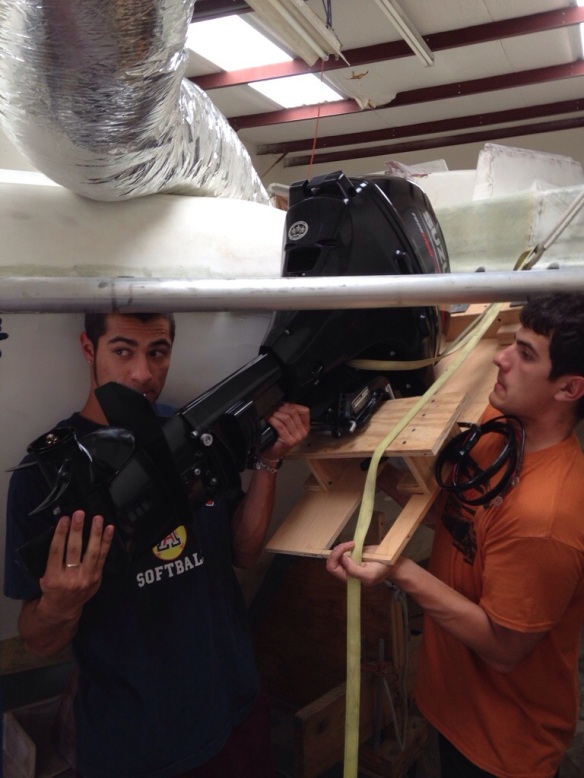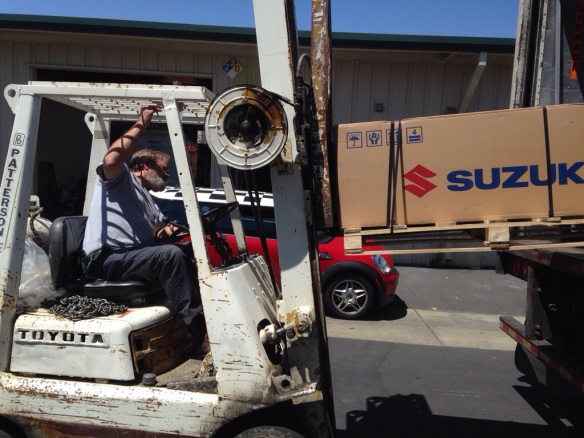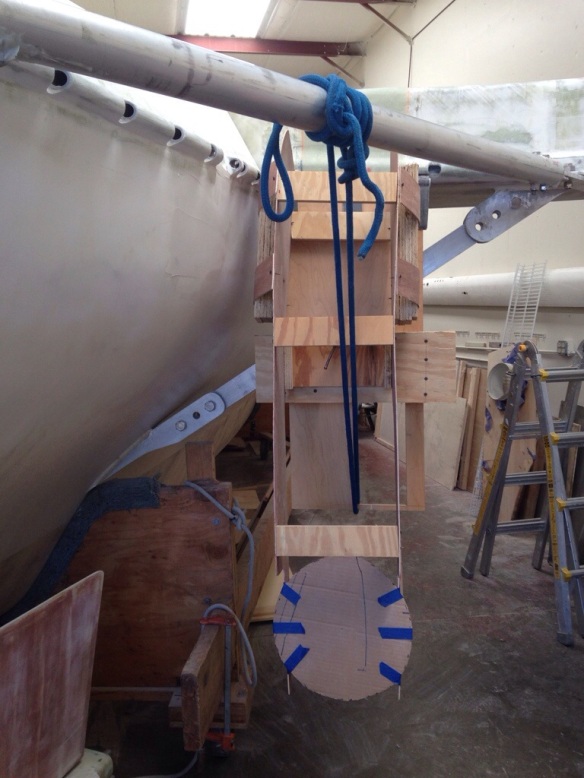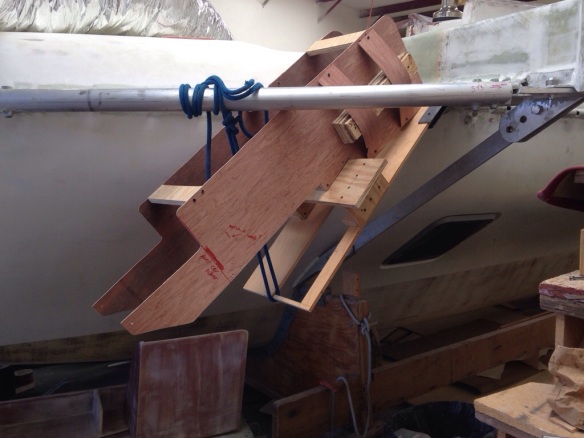Who would have guessed? The Missus is the one Carter who actually went to sailing school and earned a keelboat certificate!

Jeanne and friend Leslie Parsons attended Modern Sailing Academy in Sausalito, sporting handsome gear and scoring 94 of 100 on the written exam (to make Arlene proud, right?). Ted and Valda took us out on the Catalina today and the new drivers spent long stints at the helm learning SF Bay currents around Angel Island.
Back in the shop we had a good visit with Geoff who was down from Puget Sound. I saw photos of the 60′ tri he built – wow – and we traded tips and ideas. Makes me eager to learn more about the Wallas diesel stovetops, to pair that fuel source with the diesel furnace/water heater we bought a while back. Still looking for someone who’s actually cooked on one of these Wallas stoves. Also thinking of skipping an oven which could really improve the galley layout. Maybe carry a solar oven when cruising.
So not only is Jeanne exciting her husband by driving the boat, she came in to the shop yesterday and admired her new daggerboard. It’s in paint steps now; pretty great to have a big important part all done, and very rewarding to not have paid the $4k estimate to have one built for us (although we do have a solid $500+ in supplies in it).

Not having labor bills helps get the mind ok with ‘splurging’ on the good stuff in materials. And with all the time put in the dagger, there’s no way I’d use anything but the best possible primer to permanently epoxy encase and prevent water intrusion to the glass or wood.

This interlux two part system is designed to sit under the two part LPU topsides and hard-style bottom paints. The primer claims a unique overlapping stacking system that forms tiny continuous barriers like shingles sloping down a roof until the waters flows over the edge. At $119 a gallon, we better not have to see the dagger’s primer layer for a long time (never, ideally!)
A big thanks here to Colin for repositioning the main hull yesterday in the hot afternoon and hoisting the port aft beam back in place on the boat so we can build the outboard motor mounting system. Next step is to either get the shell of a 20″ shaft old outboard or get measurements online and make a faux motor shape. I’m noodling over the swing-up brackets attachment points to the back of the beam. It’s all a little trickier than popping the motor on the transom of an F31, but in the end I think we’ll really appreciate having the motor tucked 5′ farther forward, pushing right on the heavy beam structure. Anyone with ideas / cautions, send them thru!
Thanks























